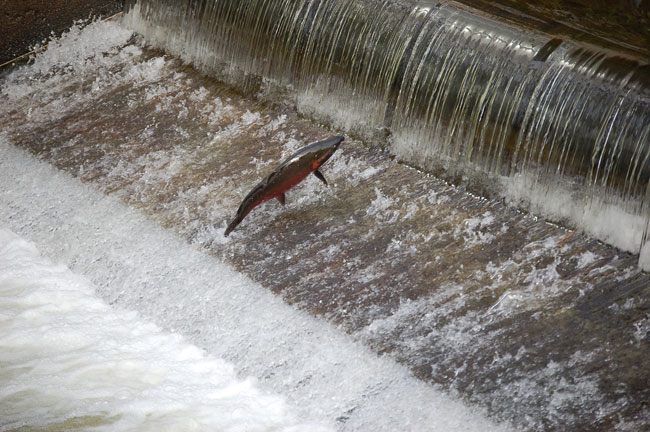
For today’s blog post, we’re gonna party like it’s 1999 with an unlikely hero (after all, you can still party like it’s 1999 if you don’t have legs!). Indeed, the star of today’s show is none other than the threatened salmon, and it has been quite a journey for the past several years!
As with the rest of the world, 1999 marked the end of a millennium, as well as the end of crimped hair, snap bracelets and other fabulous fashion statements. But, for American Forests’ Global ReLeaf, 1999 also signaled new beginnings. In fact, this was one of the first years of collaboration with Nooksack Salmon Enhancement Association (NSEA) — a longstanding partnership that has witnessed work spanning 10 separate years!
Sure, anniversaries are great and all. But, how does planting trees affect salmon, exactly?
Unbeknownst to many at first glance, trees, forests and riparian corridors provide a myriad of benefits for aquatic species, including salmon. They shade and cool streams, which is necessary for viable habitats for local populations. They also increase dissolved oxygen levels, mitigate soil erosion into waterways and prevent sediment buildup from occurring. Furthermore, riparian habitat is critical for filtering pollutants from the air and water, and leaves and other organic matter provided by trees yield sources of food and habitat for many species.
By partnering with NSEA, we have planted over 136,000 trees total in the Nooksack river basin as of our 10th anniversary to restore freshwater salmon habitat — particularly for species such as the Chinook and Coho salmon. Salmon are incredibly sensitive to changes in water quality and quantity, and the beginnings of our partnership came at a crucial time for these species: salmon populations had been declining for approximately 50 years, with their overall population health worsening in the ‘80s and ‘90s. In fact, critical habitat had just been designated for the Coho salmon in 1999, and the Chinook salmon had just been listed as threatened nine years prior, in 1990. These fish are certainly worth preserving — known as the “king salmon,” the Chinook was well-known among the Lewis and Clark expedition, and Lewis himself once wrote that, when fresh, they tasted “better than any fish” he had ever eaten.
American Forests and NSEA are continuing to work closely together to preserve these and other salmon species, as well as dozens of other species that rely on salmon and salmon eggs. We are planting 10,000 trees in riparian areas this year and have also assisted in educational outreach among youth and other groups — a feat that will ensure that there will not only be salmon for the years to come, but also (we hope!) our next generation of environmental stewards.